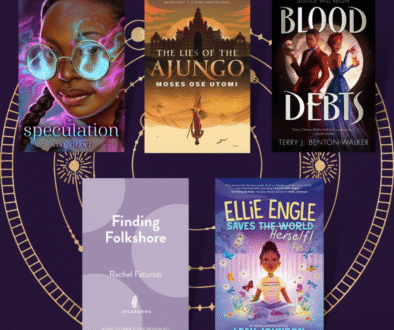The Plot Thickens: A Comb of Wishes
There’s truly something in the water this February as I’m batting two for two with seafaring Black girl stories this year. First with Kemosha of the Caribbean, which I have hailed as the best pirate book I’ve ever read. Now, I’m ready to declare A Comb of Wishes—a middle grade novel set on a fictional Caribbean where a vicious mermaid secretly holds dominion—the greatest mermaid novel of all time.
A Comb of Wishes is a tale of grief, loss, community, love, and purpose. Kela Boxhill is a twelve year old girl who lives on the island of St. Rita with her dive shop-owning father. She is so talented at crafting sustainable jewelry that she is part of a competitive creative fellowship for her age group. Or she would be, if she had the heart to follow through with the final promise she made to her mother before her death three months prior to the start of the story. Kela’s lack of heart is something that resounds through most of the story as we can see both her and her father operating with their hearts irrevocably broken after the loss of her mother. This enduring sadness has led Kela to withdraw from some of her favorite people, including her best friend Lissy whom she used to share everything with. On the day that Kela and Lissy form a loose reconciliation, Kela is drawn to a mysterious cave where she finds a centuries-old comb that vibrates and unleashes a storm upon her touch. What she doesn’t know is that this comb is the treasure of a very territorial mermaid who is willing to offer Kela’s deepest wish in order to get this comb back—at a steep price. What happens next thrusts Kela, her father, and friends into a path of historical discovery, familial revelations, treachery, and a mermaid’s vengeance.
The ways in which A Comb of Wishes explores the main themes of the story—grief and enduring love—is masterfully intertwined with the pacing and plot. Kela’s detachment from those around her who continue to show her love and support as she works through her loss seems extremely real and contributes to much of her character development. Her emotions speak to the listlessness that one feels when nothing you do can change reality to what you truly desire. Her feelings seem less a rejection and more a way of hiding in plain sight. She doesn’t consider that anyone around her can truly help—not even Lissy who lives with her grandmother and must have similar parental loss. Everyone knows she’s in pain and offers assistance accordingly, but she can’t quite feel deserving of help because of the guilt she harbors for the last thing she said to her mother. The pacing of the story allows you see how this imbalance of guilt and community support throws Kela’s decision-making process askew. From breaking into her mother’s archival records at the local museum to confronting adult thieves in dark alleys on her own, Kela’s got more than just a wrathful mermaid digging into her conscience.
Not only does the author get the character development and story beats just right, Lisa Stringfellow invokes Black story traditions to create a cadence to the book that builds a rhythm that keeps you flying through until the end. Each of the characters show the breadth of internal conflict in such a way that there truly are no superfluous characters or plotlines. No villain is irredeemable and no hero is wholly virtuous. I can think of no better book to share with anyone seeking a fresh take on mermaid lore, the role of storytelling in Black tradition, or grief than A Comb of Wishes.



